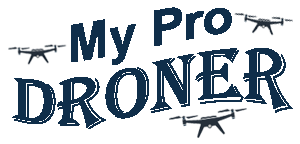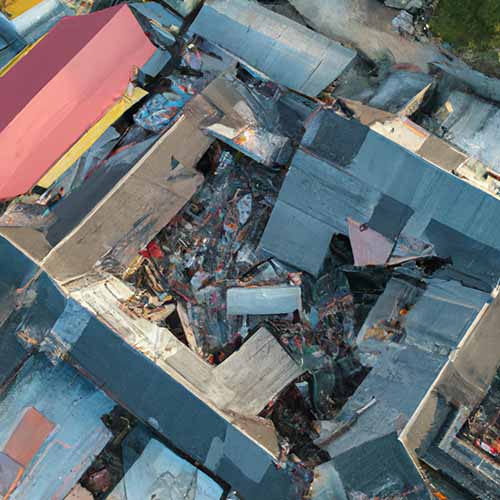Professional Aerial Drones for Insurance and Inspections
Welcome to the skies of innovation and efficiency! In a world where technology is soaring to new heights, aerial drones have become indispensable tools for the insurance and inspection industries. These sleek flying machines are revolutionizing the way professionals gather data, assess risks, and streamline operations. Join us as we dive into the exciting realm of professional aerial drones for insurance and inspections!
The Growing Use of Aerial Drones in Insurance and Inspections
The use of aerial drones in insurance and inspections is on the rise, transforming traditional practices with cutting-edge technology. These unmanned aircraft offer a bird's-eye view of properties, infrastructure, and disaster areas, allowing for quick and accurate assessments. Insurance companies leverage drones to expedite claims processing by capturing high-resolution images and videos of damaged assets.
Inspection professionals utilize drones to access hard-to-reach or hazardous locations without compromising safety. With advanced sensors and cameras onboard, drones provide detailed data that aids in risk assessment and preventive maintenance strategies. The ability to cover vast areas efficiently makes drone technology a game-changer in optimizing workflows for insurers and inspection teams.
By harnessing the power of aerial drones, industries can enhance productivity, reduce costs, and improve overall outcomes. As more organizations recognize the value of drone technology, its integration into everyday operations continues to expand rapidly across diverse sectors globally.
Benefits of Using Aerial Drones for Insurance and Inspections
Aerial drones have revolutionized the insurance and inspection industries, offering a range of benefits that were previously unimaginable. One major advantage is the ability to access hard-to-reach or hazardous areas without putting human lives at risk. Drones can capture high-resolution images and videos, providing detailed insights into properties or assets for insurance claims assessments or inspection reports.
Using aerial drones also saves time and money by significantly reducing the resources needed for traditional inspections. With drones, tasks that used to take days can now be completed in a matter of hours, increasing efficiency and productivity. Additionally, the data collected by drones is more accurate and comprehensive than manual methods, leading to better decision-making processes.
Furthermore, aerial drones enhance safety measures during inspections by minimizing on-site risks and improving overall operational safety standards. By utilizing drone technology, companies can streamline their workflows and deliver faster results to their clients while maintaining high levels of precision and quality in their work.
Types of Aerial Drones Used in the Industry
When it comes to aerial drones used in the insurance and inspections industry, there are various types that cater to different needs. The most common ones include quadcopters, hexacopters, octocopters, fixed-wing drones, and hybrid drones.
Quadcopters are popular for their agility and stability in capturing detailed images of properties from multiple angles. Hexacopters offer enhanced stability and lifting capabilities, making them suitable for heavier payloads. Octocopters provide redundancy with more motors and propellers for increased safety during flights.
Fixed-wing drones excel in covering larger areas efficiently due to their longer flight times and higher speeds. Hybrid drones combine features of both multirotor and fixed-wing designs for versatility in different operational scenarios.
Each type of drone has its unique strengths that can be leveraged based on specific requirements in insurance claims assessment or structural inspections.
Regulations and Guidelines for Drone Usage
When it comes to utilizing aerial drones for insurance and inspections, understanding the regulations and guidelines is crucial. The Federal Aviation Administration (FAA) in the United States has specific rules in place to ensure safe drone operations. These regulations include requirements such as registering your drone, obtaining a remote pilot certificate, and following airspace restrictions.
Drone operators must also adhere to guidelines regarding flight altitudes, maintaining line of sight with the drone at all times, and avoiding flying over people or moving vehicles without proper authorization. Additionally, drones used for commercial purposes must comply with Part 107 regulations set forth by the FAA.
It's important for businesses looking to integrate aerial drones into their operations to stay informed about any updates or changes in regulations that may impact their use of this technology. By staying compliant with these guidelines, companies can harness the full potential of aerial drones while ensuring safety and legal adherence.
Case Studies: Successful Implementation of Aerial Drones in Insurance and Inspections
In recent years, the use of aerial drones in insurance and inspections has revolutionized the way professionals carry out their work. Let's delve into some case studies showcasing the successful implementation of these high-tech devices.
One notable example is an insurance company that utilized aerial drones to assess property damage after a natural disaster. By deploying drones equipped with high-resolution cameras, they were able to survey large areas quickly and efficiently, providing accurate data for claim processing.
Another instance involves a construction inspection firm employing professional drones to conduct site surveys from above. This allowed them to identify potential safety hazards and monitor progress with precision, ultimately saving time and resources.
Furthermore, a utility company integrated aerial drones into their infrastructure inspections. These drones could access hard-to-reach areas such as power lines and wind turbines, enhancing maintenance procedures significantly.
These case studies underscore the immense value that aerial drones bring to the insurance and inspection industry; enabling faster assessments, improved accuracy, and enhanced safety protocols.
Future Outlook for Aerial Drones in the Insurance and Inspection Industry
As technology continues to advance at a rapid pace, the future outlook for aerial drones in the insurance and inspection industry is nothing short of promising. With their ability to provide high-resolution imagery and data quickly and efficiently, drones are revolutionizing how inspections are conducted.
Insurance companies are increasingly turning to aerial drones for property assessments after natural disasters, allowing them to assess damage more accurately and expedite claims processing. In the coming years, we can expect to see even more sophisticated drone technologies being developed specifically for these industries.
From thermal imaging cameras for detecting leaks or structural issues to LiDAR sensors for precise measurements, the possibilities for drone applications in insurance and inspections are endless. As regulations evolve and technology improves, we can anticipate that drones will become an indispensable tool in these fields.
The integration of artificial intelligence and machine learning algorithms will further enhance the capabilities of aerial drones, making them smarter and more autonomous in their operations. This shift towards automation will streamline processes even further, leading to increased efficiency and cost savings for businesses utilizing drone technology.
Conclusion: Why Aerial Drones are a Valuable Tool for
Conclusion: Why Aerial Drones are a Valuable Tool for
In the fast-paced world of insurance and inspections, aerial drones have emerged as invaluable tools. Their ability to provide high-quality images and data quickly and efficiently is revolutionizing the industry. From assessing property damage after natural disasters to inspecting hard-to-reach areas, professional droners are proving their worth every day.
As regulations continue to evolve and technology advances, the future looks bright for aerial drones in insurance and inspections. Embracing these innovative tools can lead to increased efficiency, cost savings, and improved safety for both workers and clients.
So next time you think about insurance claims or property inspections, consider the benefits that aerial drones bring to the table. They are not just gadgets; they are game-changers in an industry that values accuracy, speed, and reliability. Trust in pro droners – they will elevate your business operations to new heights!

